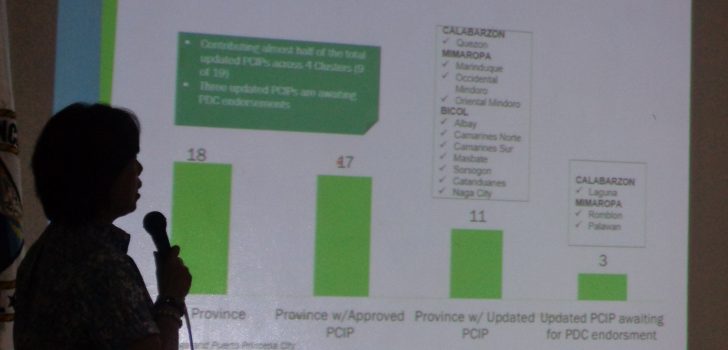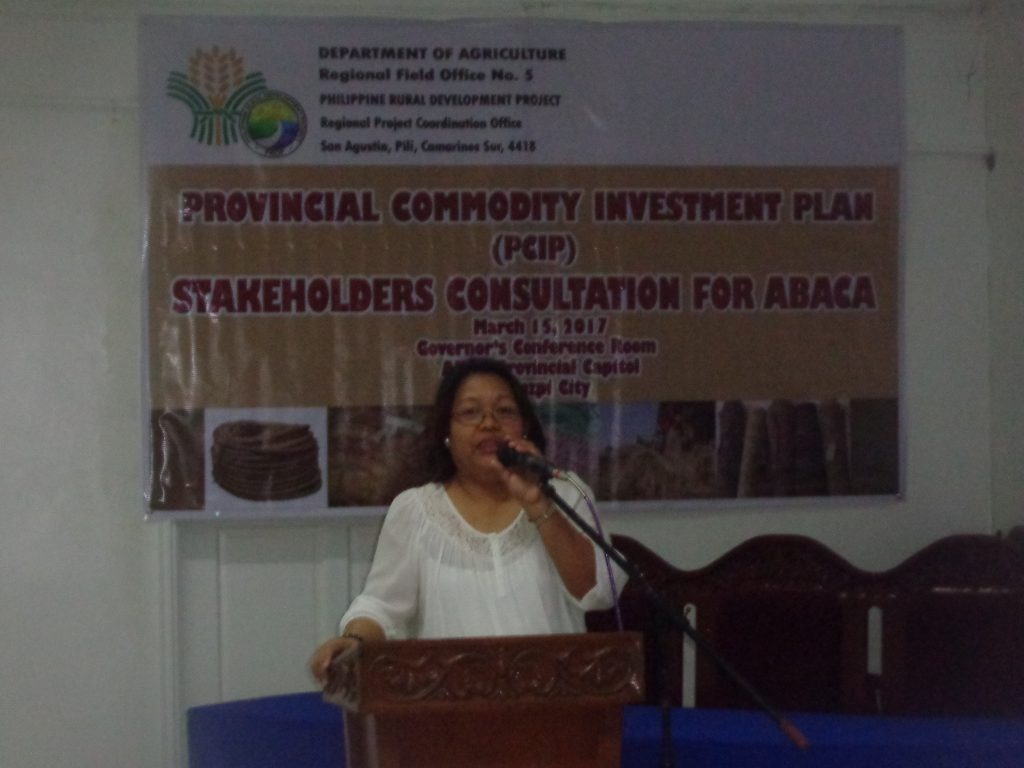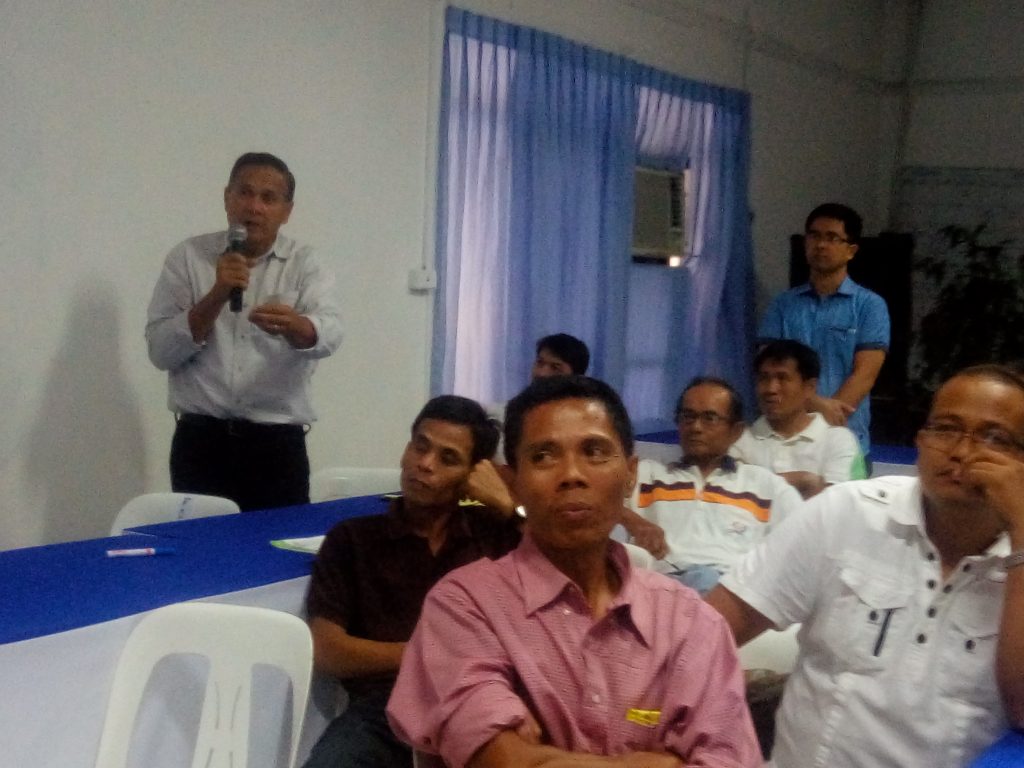 PRDP Bicol RPCO Planning Specialist Mary Ann Cuya presents the status of PRDP-Bicol’s P/CCIPs as of January 31, 2017. (Photo by Annielyn L. Baleza, DA-PRDP RPCO V InfoACE Unit)
PRDP Bicol RPCO Planning Specialist Mary Ann Cuya presents the status of PRDP-Bicol’s P/CCIPs as of January 31, 2017. (Photo by Annielyn L. Baleza, DA-PRDP RPCO V InfoACE Unit)
DA-PRDP to help make Albay the hub of abaca processing industry
Albay aims to be the premiere source of abaca fiber crafts in the Philippines using the Philippine Rural Development Project’s (PRDP) Provincial Commodity Investment Plan (PCIP). Abaca was identified as one of the priority provincial commodities for development next to coco geonets and sweet potato.
In a PCIP Stakeholders’ Consultation for Abaca in Albay held on March 15, stakeholders and key players in the value chain for abaca in the province explore prospects and investment potentials through PRDP interventions and support from both government and private agencies.
“While Catanduanes is known as the ‘abaca county’ being the top abaca fiber-producing province in Bicol, Albay is considered as the seat of abaca fiber industry in the region,” Philippine Fiber Industry Development Authority (PhilFIDA)-Bicol OIC Regional Director Mary Anne Molina said.
She added that abaca has an open market because of the increasing demand for abaca products worldwide. She shared that aside from abaca’s three major uses namely pulp and paper, cordage and fiber craft, there is a growing demand for abaca as base material for bullet-proof vests, automobile dashboard, panels, fiber glass, tea bags, spare tire casing, coffin lining, denim, textile as well as construction and roofing materials. She also mentioned that abaca is now being used in the cosmetics industry as ingredient in shampoo, lotion, soap and wellness products because abaca’s enzyme was proven to have anti-aging effect.

PhilFIDA OIC-Regional Director Mary Anne Molina discusses the prospects and investment potentials of abaca during the PCIP Stakeholders’ Consultation for Abaca held in Albay on March 15. (Photo by Marivic Diaz-Noya, DA-PRDP RPCO V I-PLAN)
“Albay will be developed to be the original, principal, earliest, fastest—to have year-round availability of abaca fiber products handcrafted by skillful, artistic and genius Albayanos. Isn’t it a great potential?” said Engr. Gina Paz Sipin, Provincial Project Management and Implementation Unit (PPMIU) Head of Albay.
To achieve this, the abaca stakeholders and key players agreed to upgrade the tissue culture laboratory to enhance seed pieces production and accreditation of nursery operators. These will address the limited supply of quality abaca planting materials. They also cite the need to provide technical assistance on recent abaca production technologies as well as training on organic fertilizer production. Other potential interventions include regulation and close monitoring of existing buying stations, establishment of abaca trading posts, procurement of hauling vehicles, promotion of contract growing scheme and provision of crop insurance to abaca farmers.
PhilFIDA reports show that the Philippines is the leading abaca fiber producer worldwide, supplying about 90 percent of the global requirement. From 2009 to 2013, Bicol has the largest volume of abaca production contributing 22,987 metric tons or 39 percent of the country’s total abaca production.
Molina said that Albay has 6,100 hectares of area planted to abaca being managed by about 2,812 farmers. Among the province’s top abaca-producing municipalities are Malinao, Tiwi, Tabaco City, Malilipot, and Manito.

Abaca farmer Jaime Brizuela proposes for the provision of crop insurance to abaca farmers under the Registry System for Basic Sectors in Agriculture (RSBSA) (Photo by Annielyn L. Baleza, DA-PRDP RPCO V InfoACE Unit)
Abaca, a member of the Musaceae family to which banana also belongs is considered as the sturdiest among plant fibers because it is three times stronger than cotton and two times stronger than sisal fibers.
PRDP uses the PCIP, a three-year rolling consensus plan between the DA and the local government unit based on the value chain analysis, in rationalizing Project interventions. Specifically, it shall be the basis for PRDP’s infrastructure development (I-BUILD) and enterprise development (I-REAP) subprojects for funding. (Annielyn L. Baleza, DA-PRDP RPCO V InfoACE Unit)
